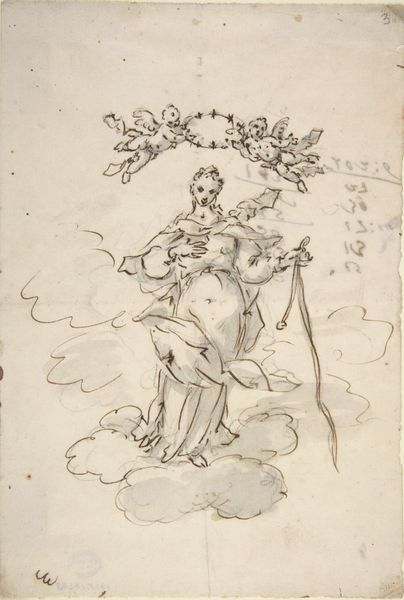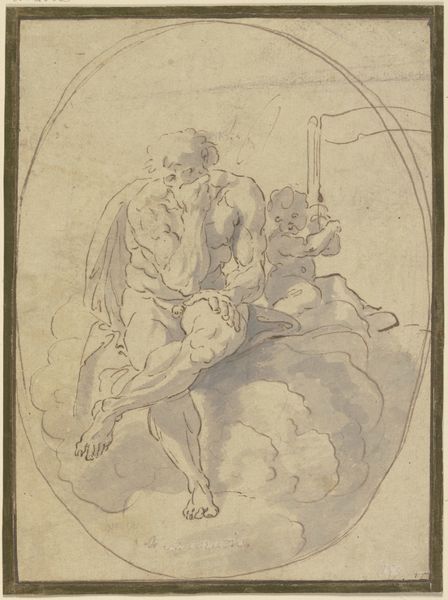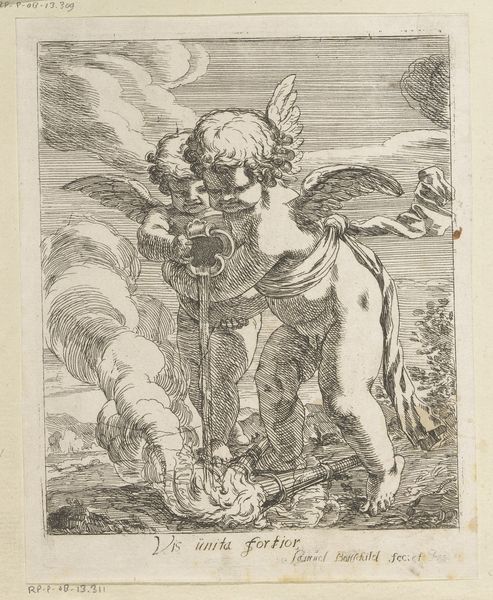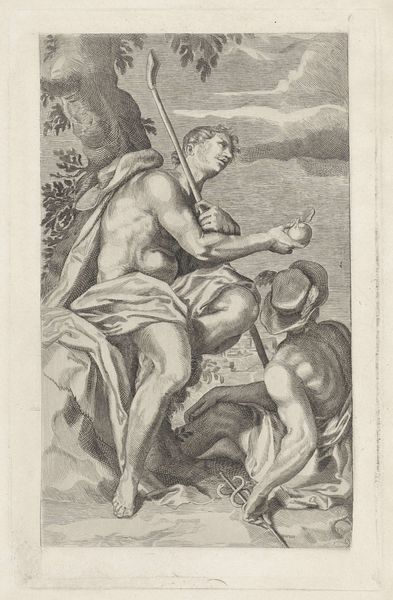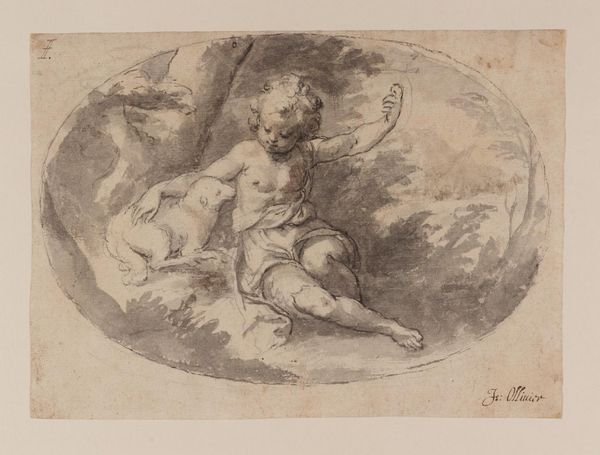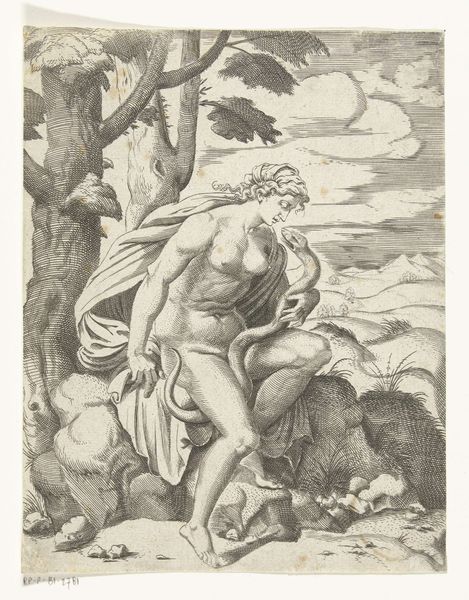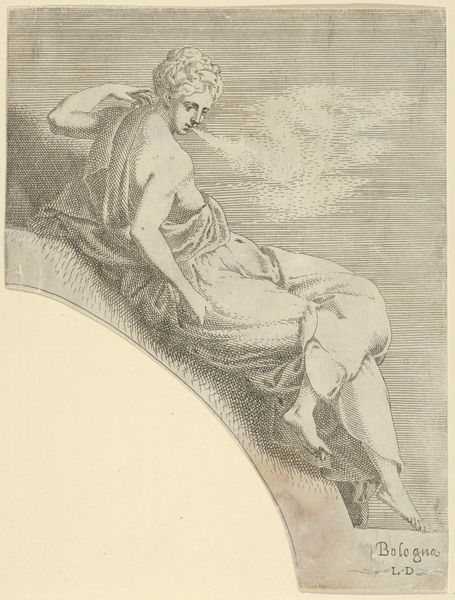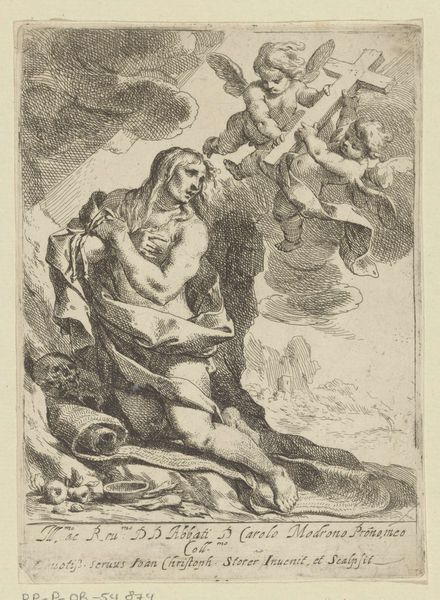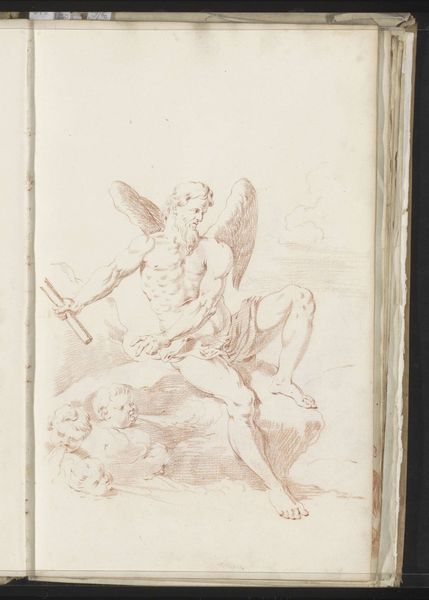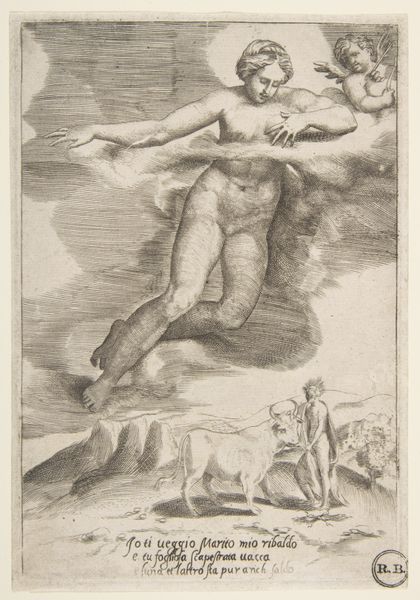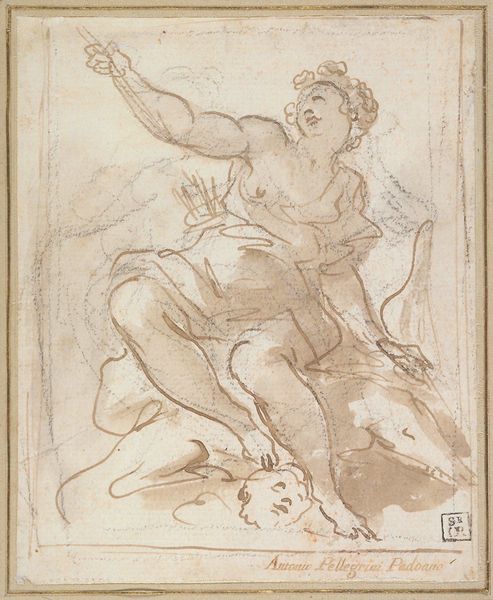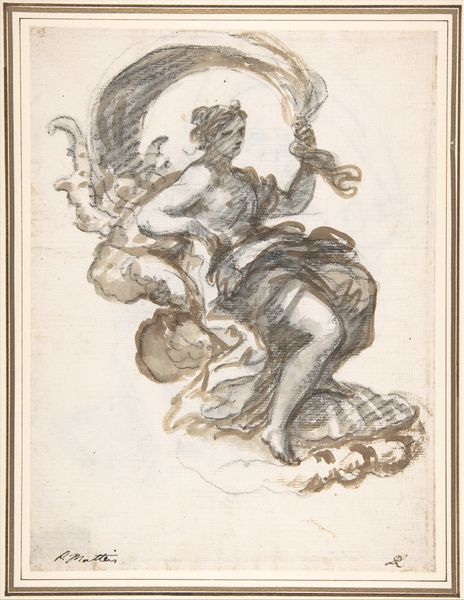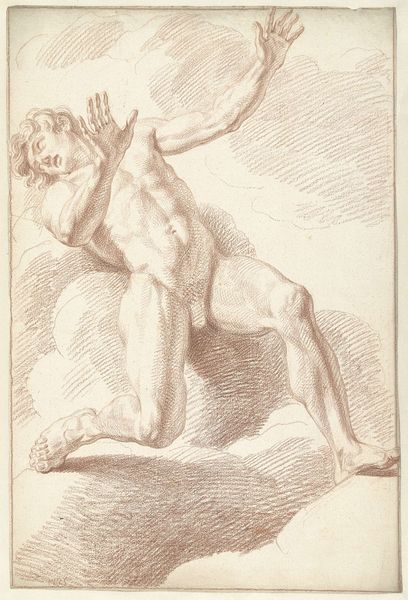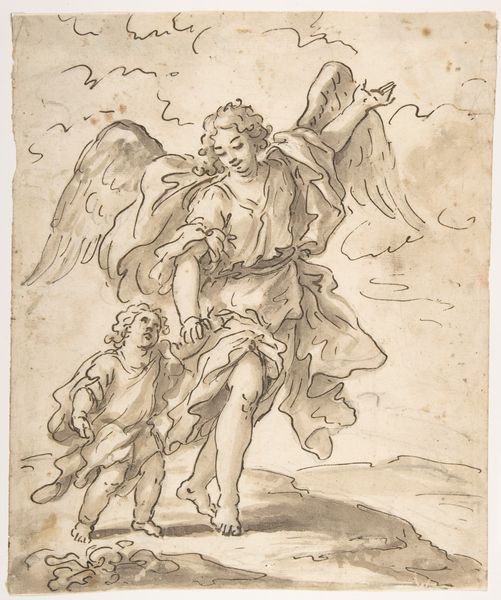
drawing, ink
#
drawing
#
comic strip sketch
#
baroque
#
pen sketch
#
pencil sketch
#
figuration
#
personal sketchbook
#
ink
#
sketchwork
#
ink drawing experimentation
#
pen-ink sketch
#
line
#
sketchbook drawing
#
history-painting
#
storyboard and sketchbook work
#
sketchbook art
Dimensions: height 209 mm, width 163 mm
Copyright: Rijks Museum: Open Domain
Editor: Here we have "Apollo Makes a Myrtle Tree Sprout on the Grave of Leucothoë," a drawing made with ink by Elias van Nijmegen sometime between 1677 and 1755. It feels like a quick sketch, maybe a study for something larger? The lines are so fluid. How do you interpret this work, particularly within its historical context? Curator: This sketch gives us insight into how classical narratives were being reimagined and, perhaps more importantly, repurposed during that period. The story of Apollo and Leucothoë is fraught with power imbalances and ultimately, tragedy stemming from divine exploitation. What does it mean to depict such a moment, and who was the intended audience? Editor: So, you're saying that instead of just seeing a mythological scene, we should consider the power dynamics being portrayed? Curator: Precisely! Baroque art often masks complex social and political undertones beneath idealized forms. Here, think about the violence inherent in Apollo's actions, even in this moment of supposed memorial. How does the act of transforming Leucothoë into a tree deny her agency, silencing her voice even in death? Is it a form of control disguised as commemoration? Editor: I hadn't considered it that way. It’s easy to get lost in the beauty of the line and overlook the problematic aspects of the narrative itself. The myth becomes a symbol of imposed transformation. Curator: Exactly! This is where art history intersects with contemporary critical theory. We have to question what these classical stories were doing culturally. What were they reinforcing? Editor: I guess I was so focused on the technical skill that I missed the deeper implications. I will definitely try to ask myself these questions next time. Thanks for the insight! Curator: My pleasure! This work challenges us to really consider visuality and violence, which is more relevant now than ever.
Comments
No comments
Be the first to comment and join the conversation on the ultimate creative platform.
